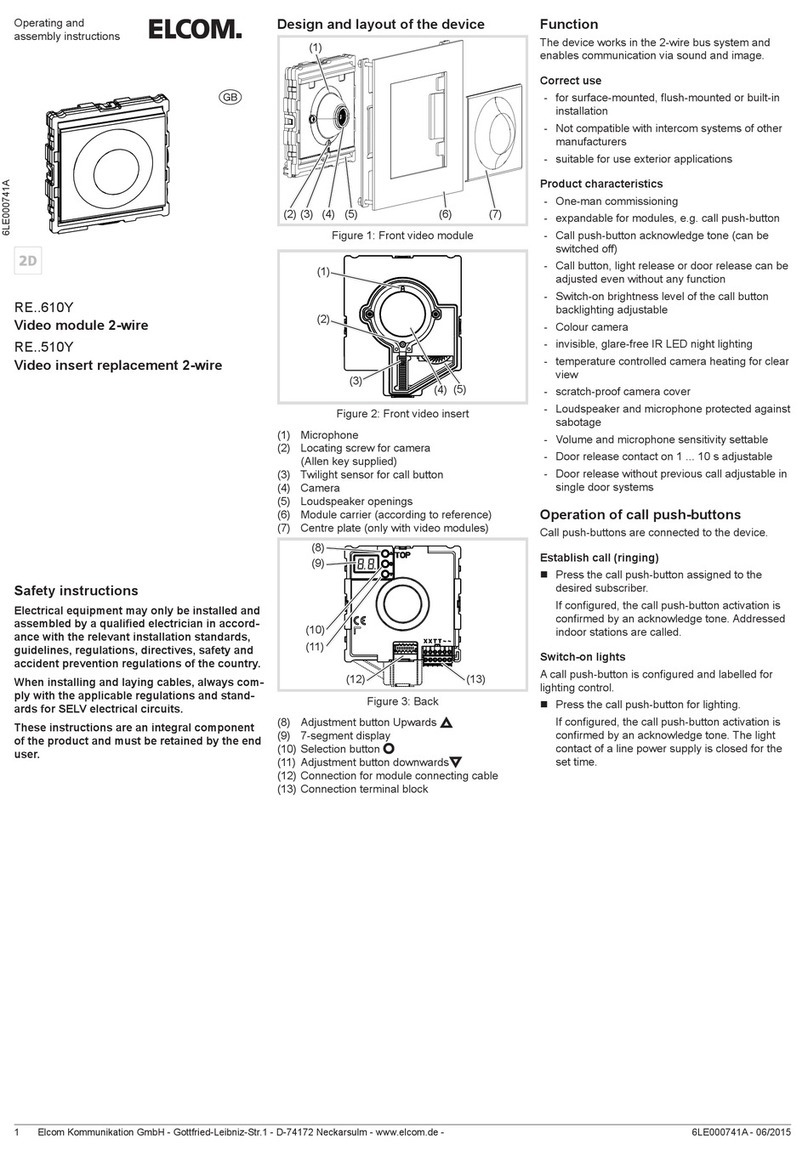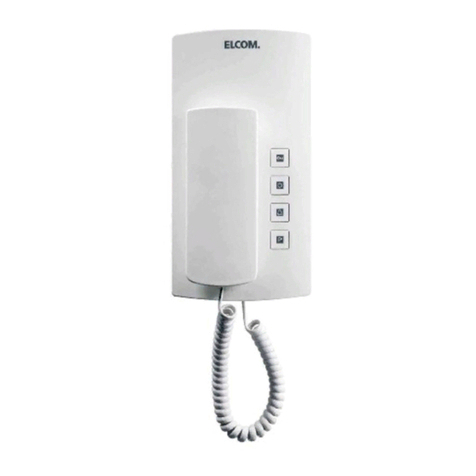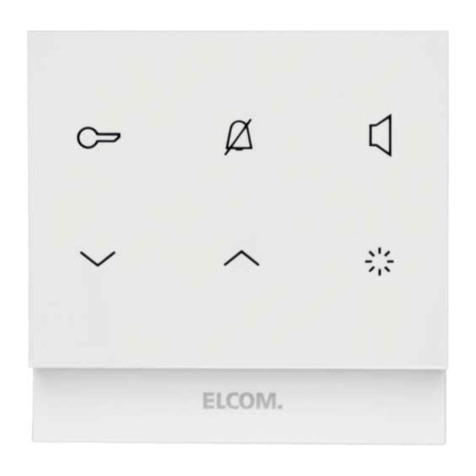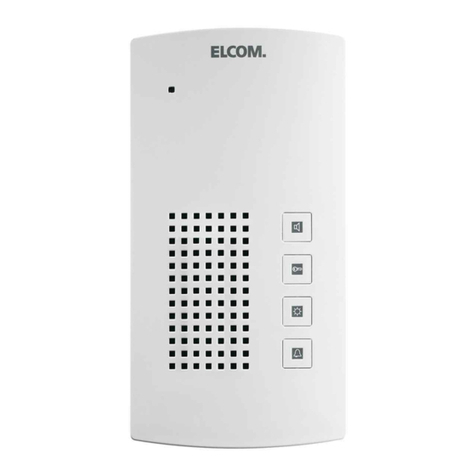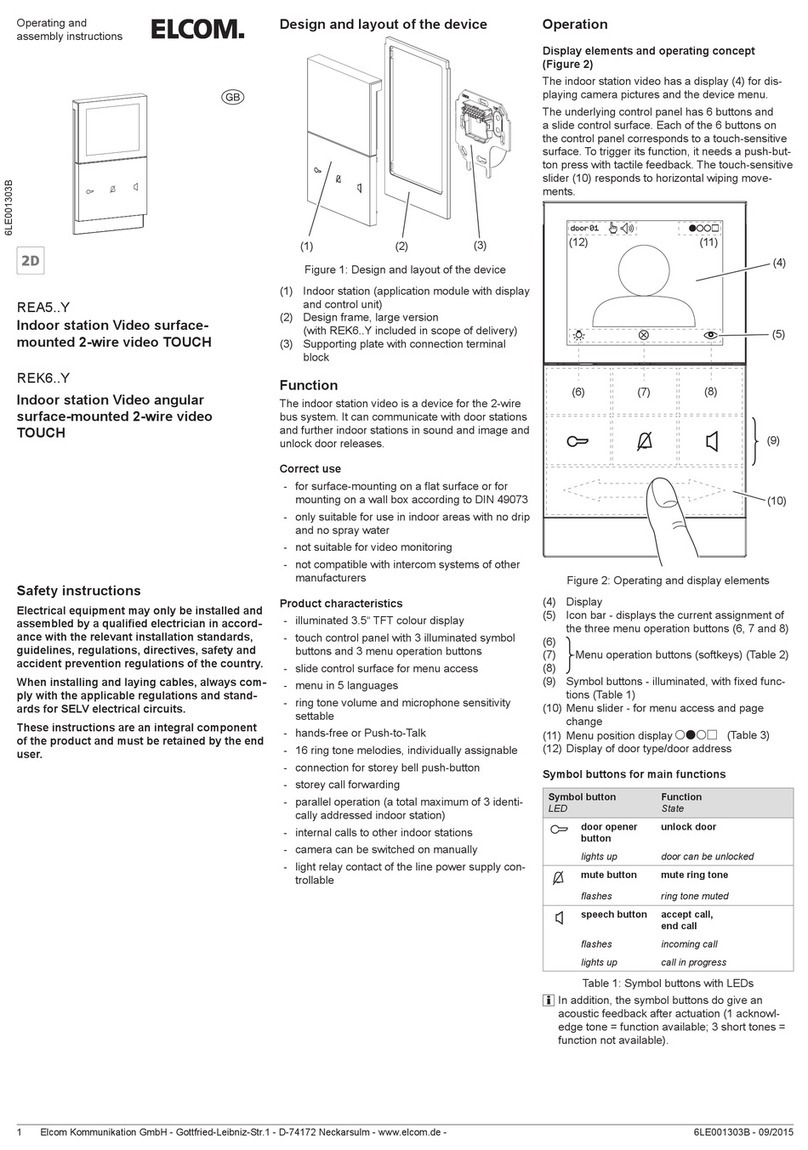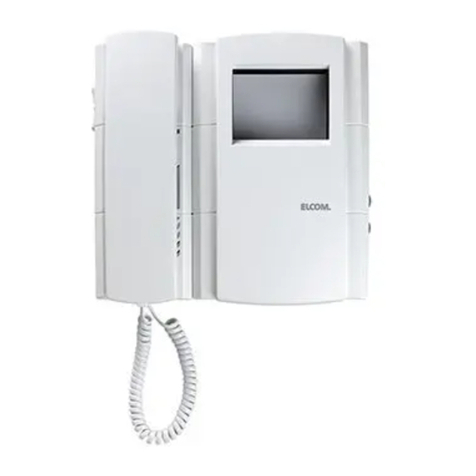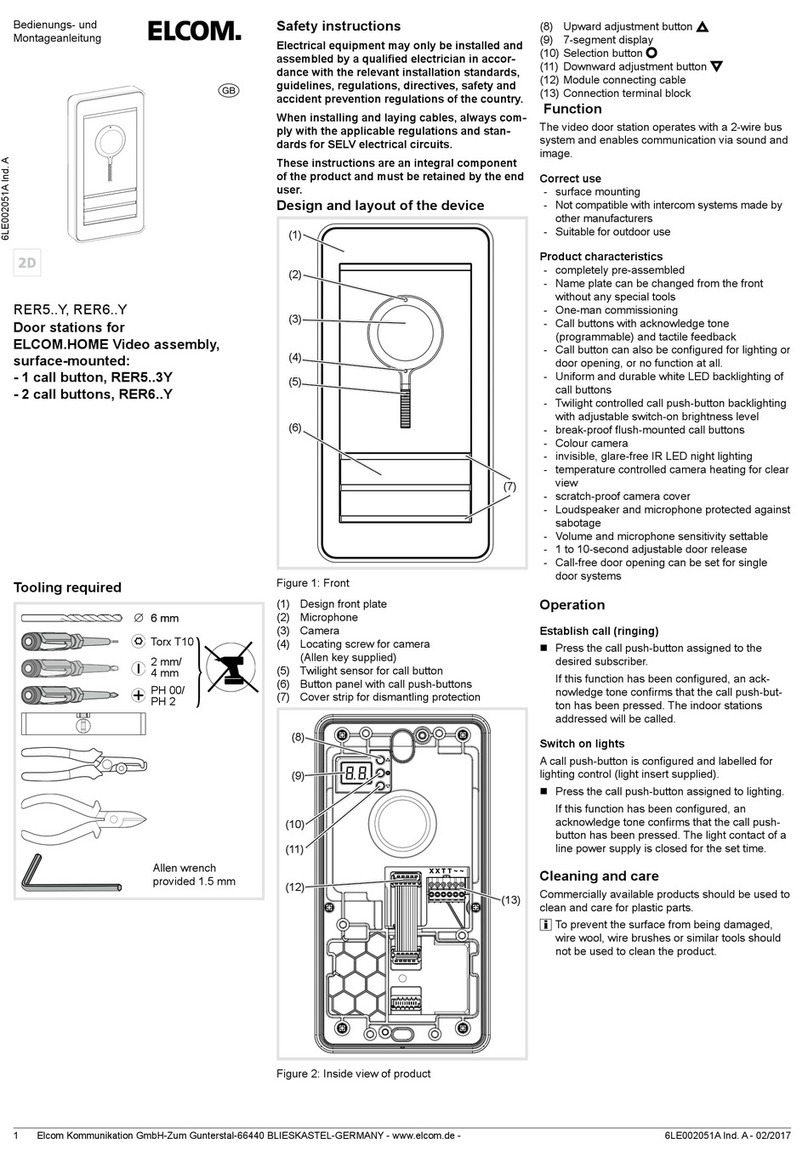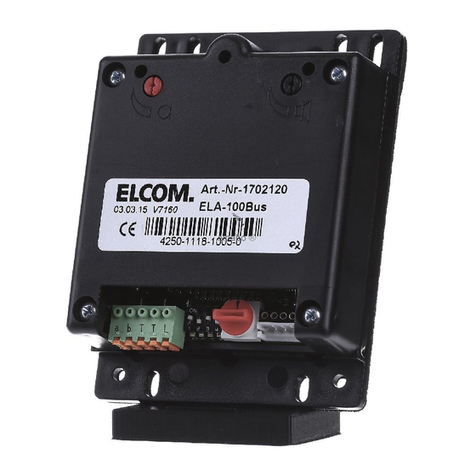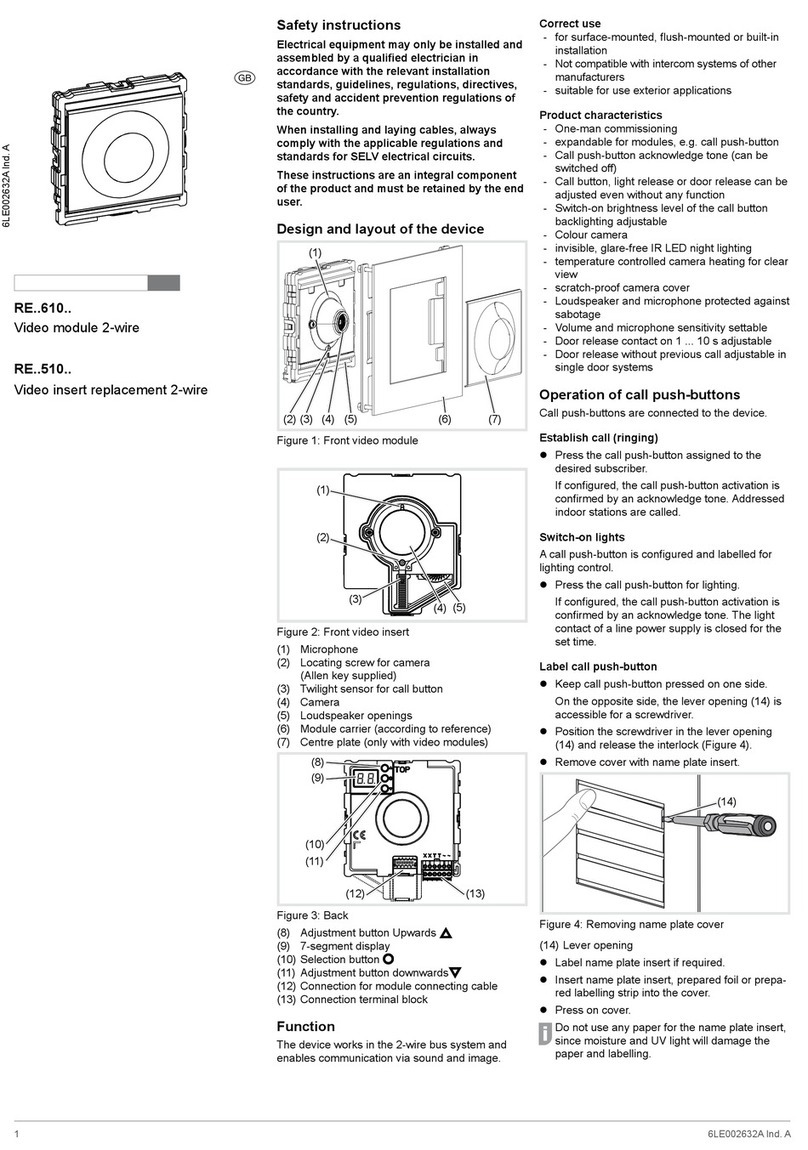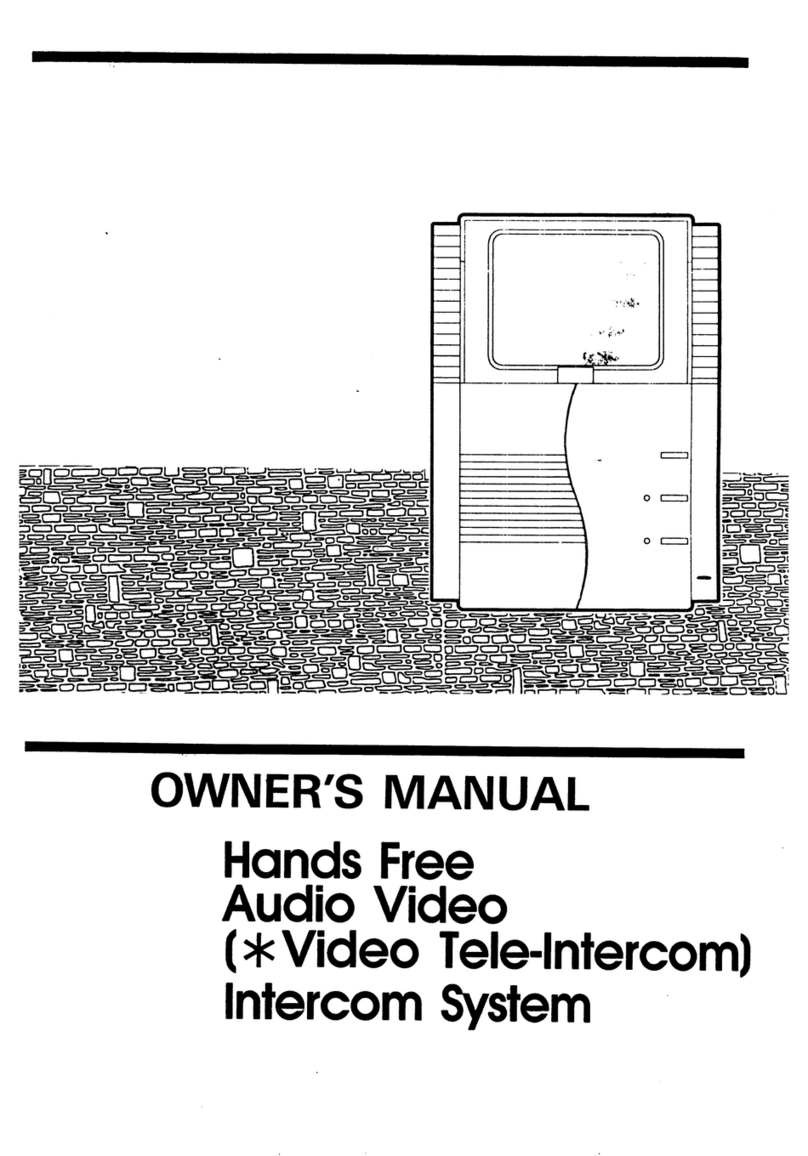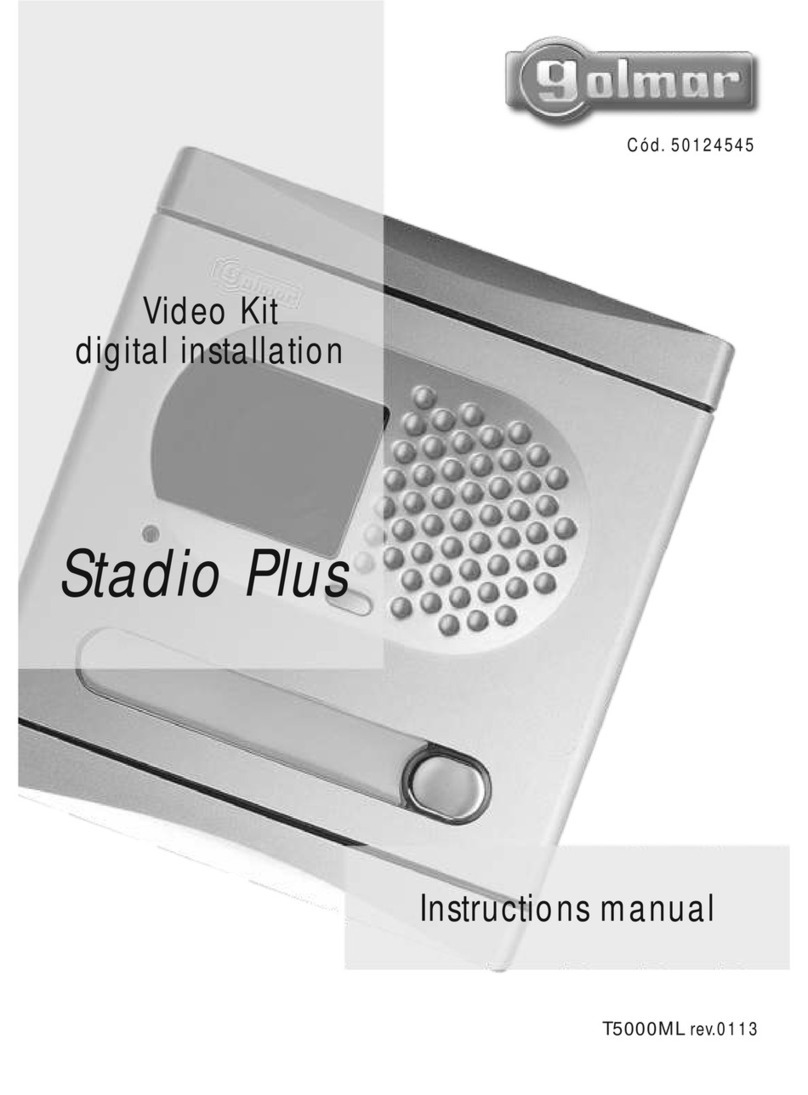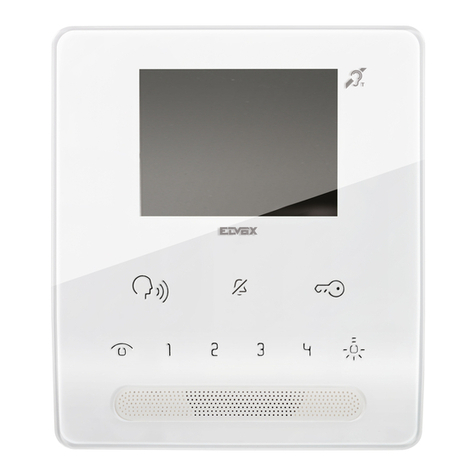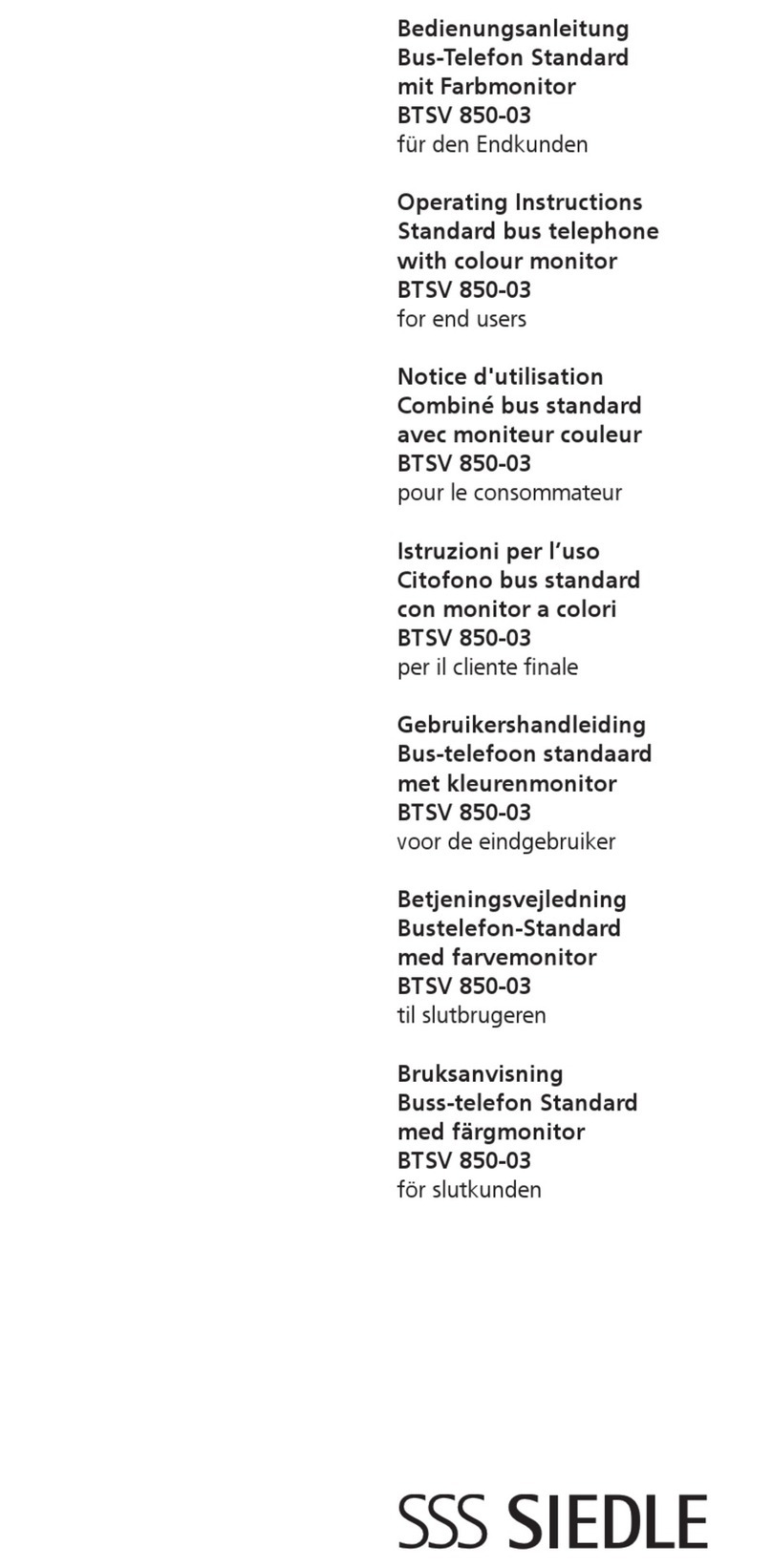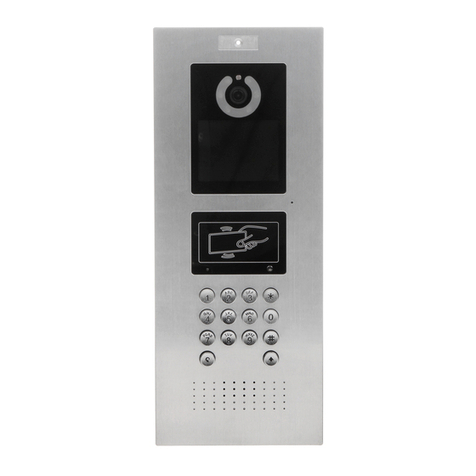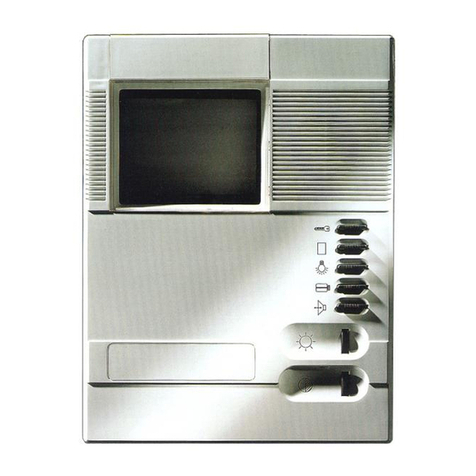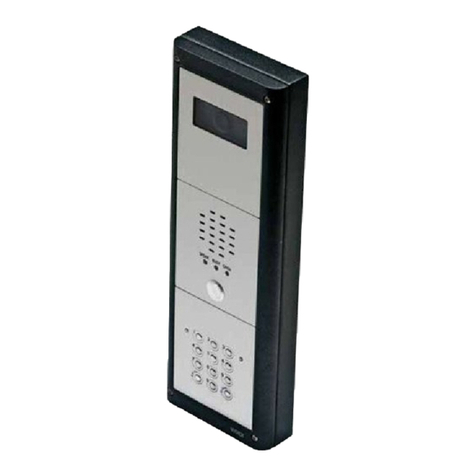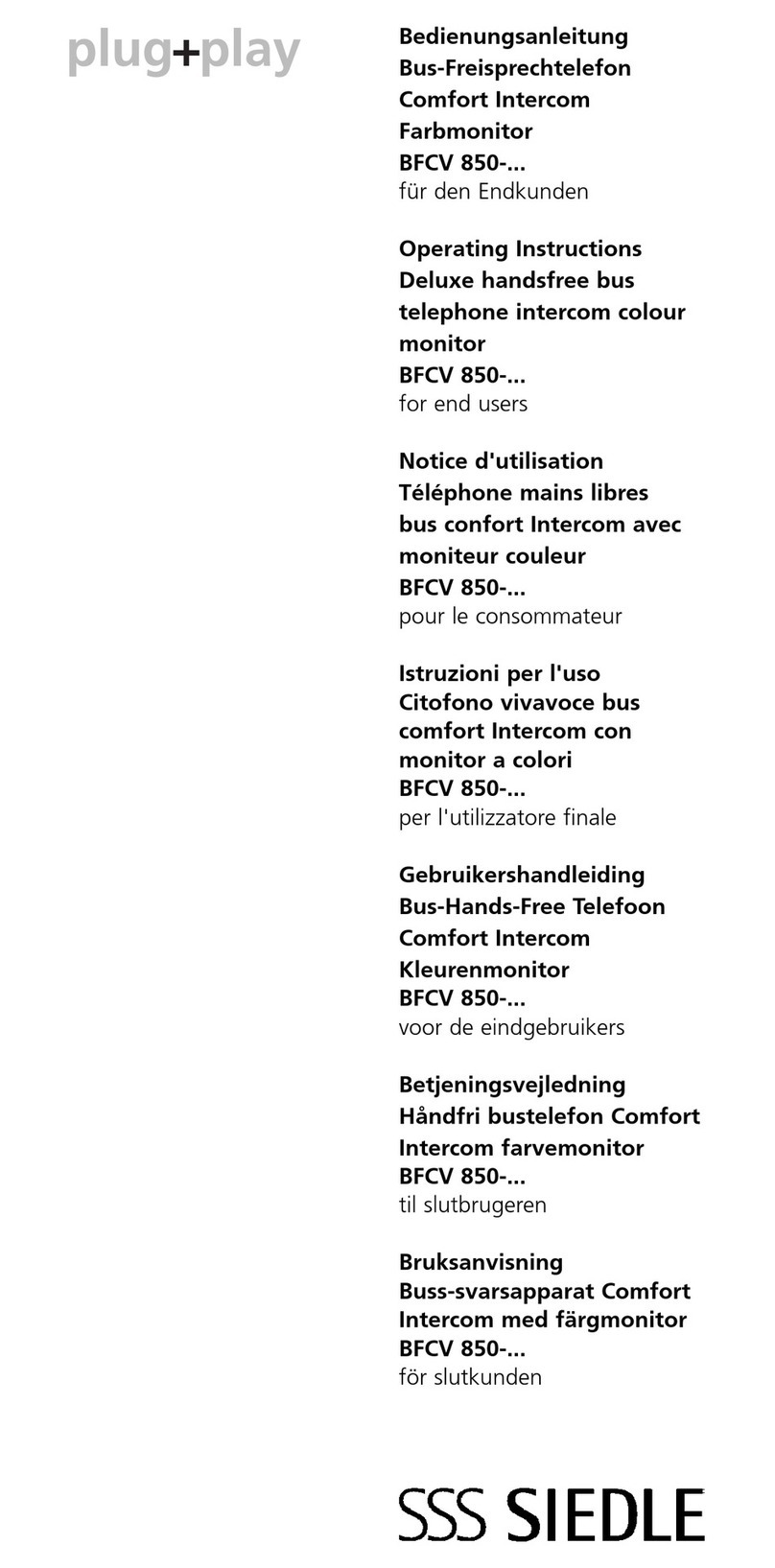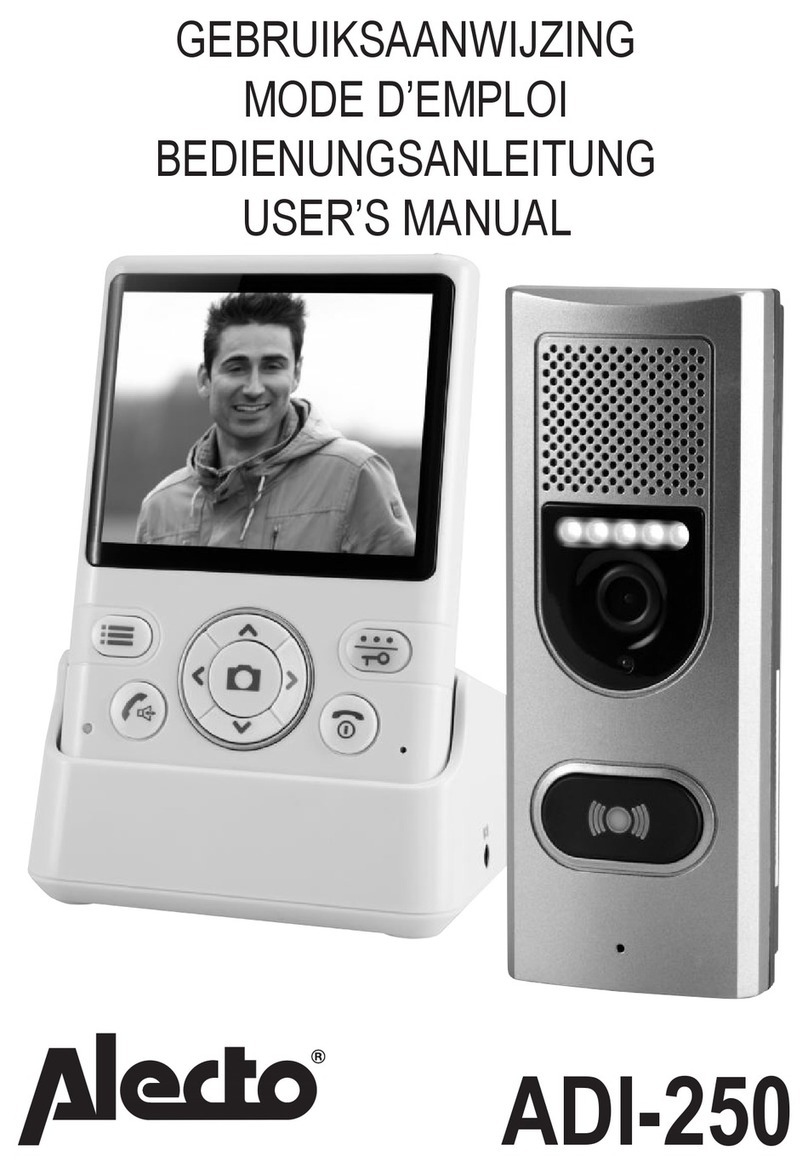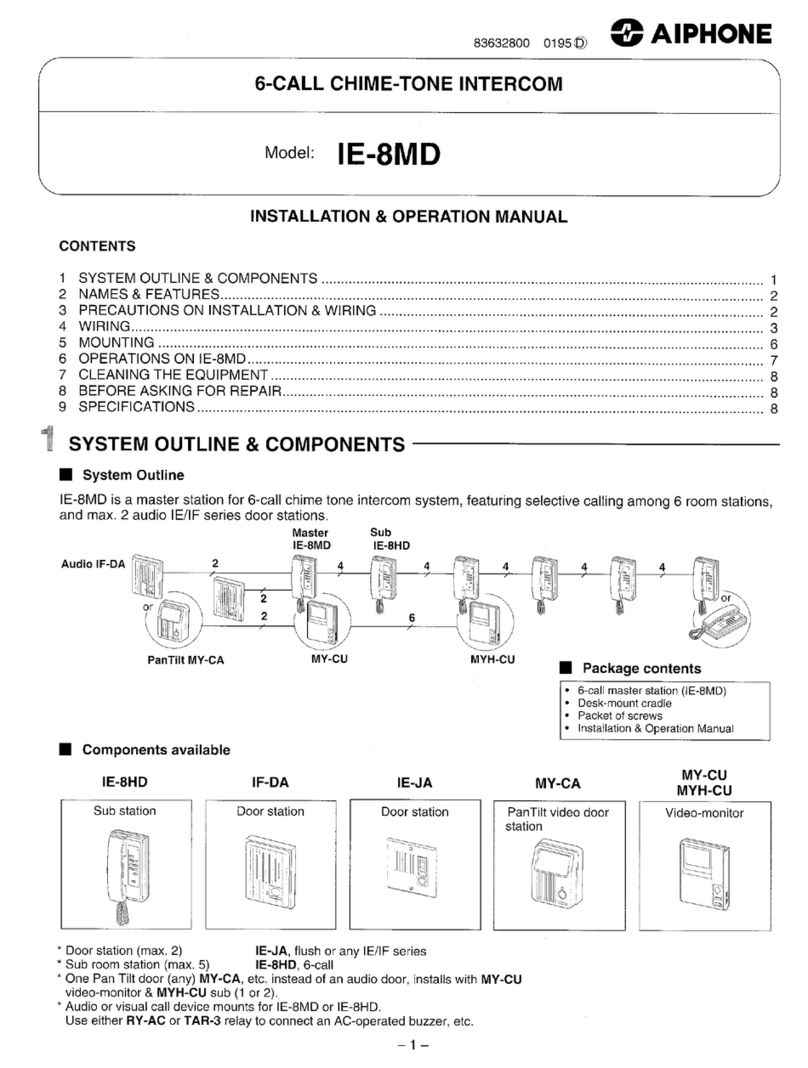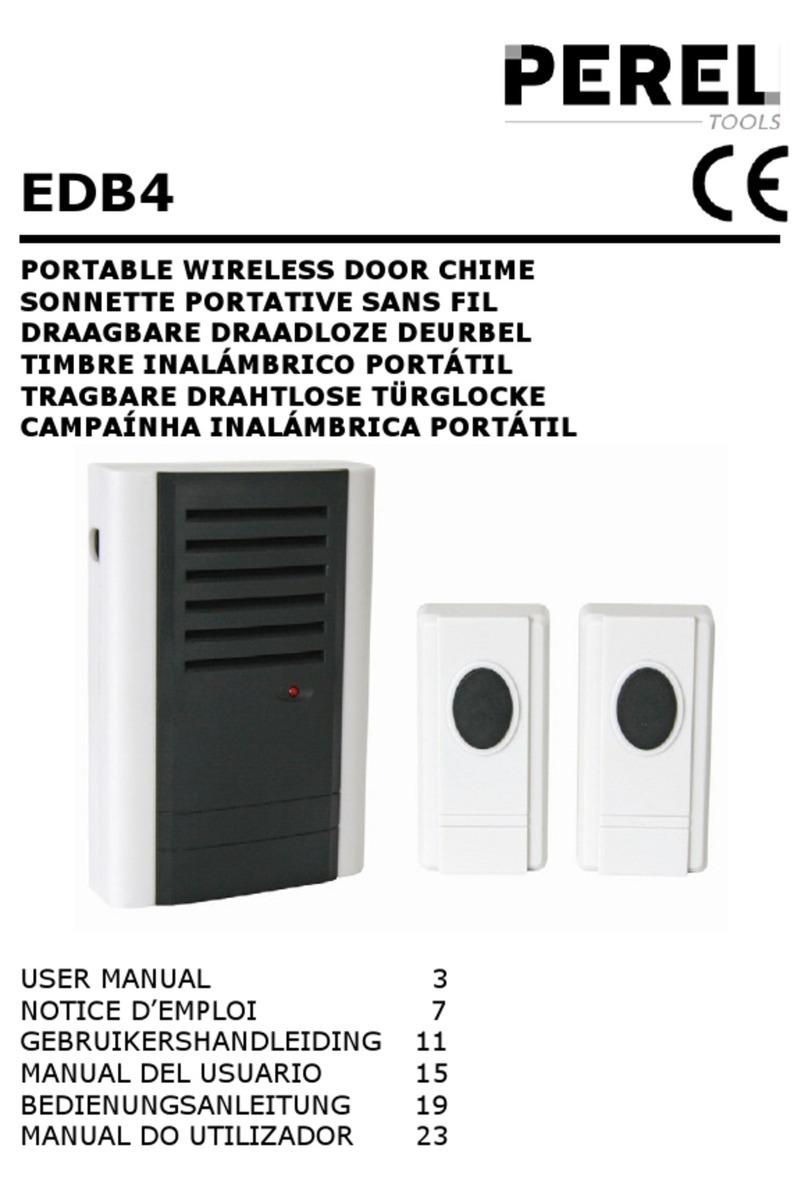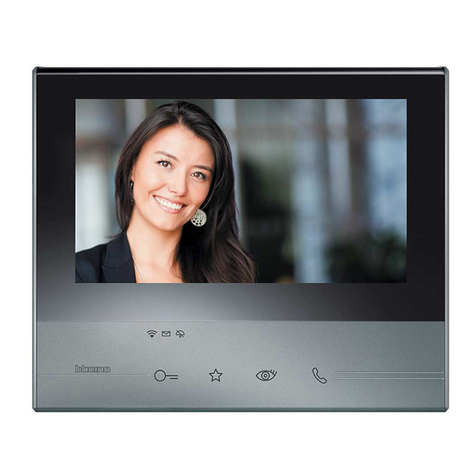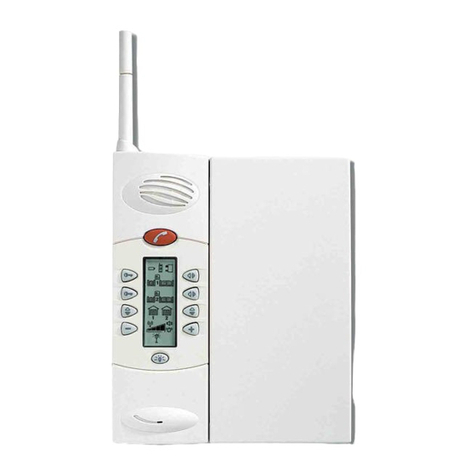
Elcom Kommunikation GmbH-Zum Gunterstal-66440 BLIESKASTEL-GERMANY - www.elcom.de - 6LE001998A Ind. A - 10/20163
Switching and wiring diagram symbols
Line power supply RMD
Power transformer
Door release
Door station audio
Twisted wire pair, for 2-wire devices
(recommendation: white/yellow wire pair)
Untwisted wire pair, for e.g. for door release
- The earthing of the Bus line power supply (PE)
increases interference resistance.
- The Bus line power supply must be installed
far away from any sources of electromagnetic
disturbance (Wireless telephony and radio,
hi- equipment, video, computing, etc.).
Figure 8: Door release connection on the door
station
Figure 9: Connection of door station with
manipulation-protected door release
Call up and change system settings
On the back of the audio module, there are 3 but-
tons and a 2-digit 7-segment display (gure 2) for
the system (gure 11) settings.
Press / button.
Device turns to setting mode. The rst menu
entry is displayed.
The reading direction of the 7-segment display
varies by 180° depending on which button /
you start with.
Select the desired menu entry with / .
Conrm the selection with .
The 7-segments display goes dark if there is no
actuation for 5 seconds. Settings are applied.
The device returns to normal operation.
Setting the values
The menu entry to be set is conrmed and ashes
alternately with the value to be set.
Press / button.
Press briey: change the value by one step.
Press and hold: run through values. Scrolling
stops when the button is released.
Conrm set value with
The device applies the setting and returns to
the previous menu entry.
Automatic call push-button addressing
The call push-button and connector on the back
are addressed by the automatic call push-button
addressing as follows. Addressing is performed
automatically from top to bottom (gure 10).
Door stations are automatically pre-congured
at the factory.
The menu entry is conrmed. ashes alter-
nately with the entry for cancel.
With / select the entry for automatic
addressing.
Conrm with .
During the addressing, the display ickers.
Afterwards the display returns to the previous
menu entry .
Figure 10: Module address and automatic call
push-button addressing
Set individual call
push-button
address/function
The menu entry Set individual call push-button
address/function is conrmed and ashes.
Conrm the call push-button to be set.
The menu entry ashes alternately with the
current address/function.
With / select the required address ...
or function for light push-button, for
door release push-button or for no function.
Internal call 1) :
In the door communication system, internal
calls from indoor station to indoor station are
possible. Unlike comfort indoor stations only the
xed addresses and are available as call
destination for the internal call.
1) Requires the appropriate default setting by the installer
(see: Indoor station/Expanded settings).
Conrm set address/function with .
The device applies the setting and returns to
the previous menu entry. .
Display of saved error codes
Audio insert and call push-button module errors
that occur during operation are stored in the the
error memory of the audio insert for diagnosis.
Select menu entry with button / and
conrm with
If no error code has been saved, is
displayed for 2 seconds followed by again.
If error codes have been saved, ashes
and the module address and error code are
displayed.
Press button / , to call up further error
codes if necessary.
Press button to return to menu entry .
Error
code
Error cause Corrective
actions
Communication error
between audio insert
and call push-button
module. Once the
error has occurred 3
times, the system is
reset automatically
and the error code is
generated.
If the error
continues, the
call push-button
module must be
replaced and
the addressing
operation
performed again.
Call button stuck. Check call push-
button module,
and if there is a
defect, replace
and address.
Call push-button
address failed to write
in call push-button
module.
If the error per-
sists, the call
push-button
module must be
replaced and
addressed.
Table 1: Error codes and corrective actions
The memory should only be deleted once 5
error codes have been stored, so that new error
codes can be saved.
Identical error codes are only saved once.
